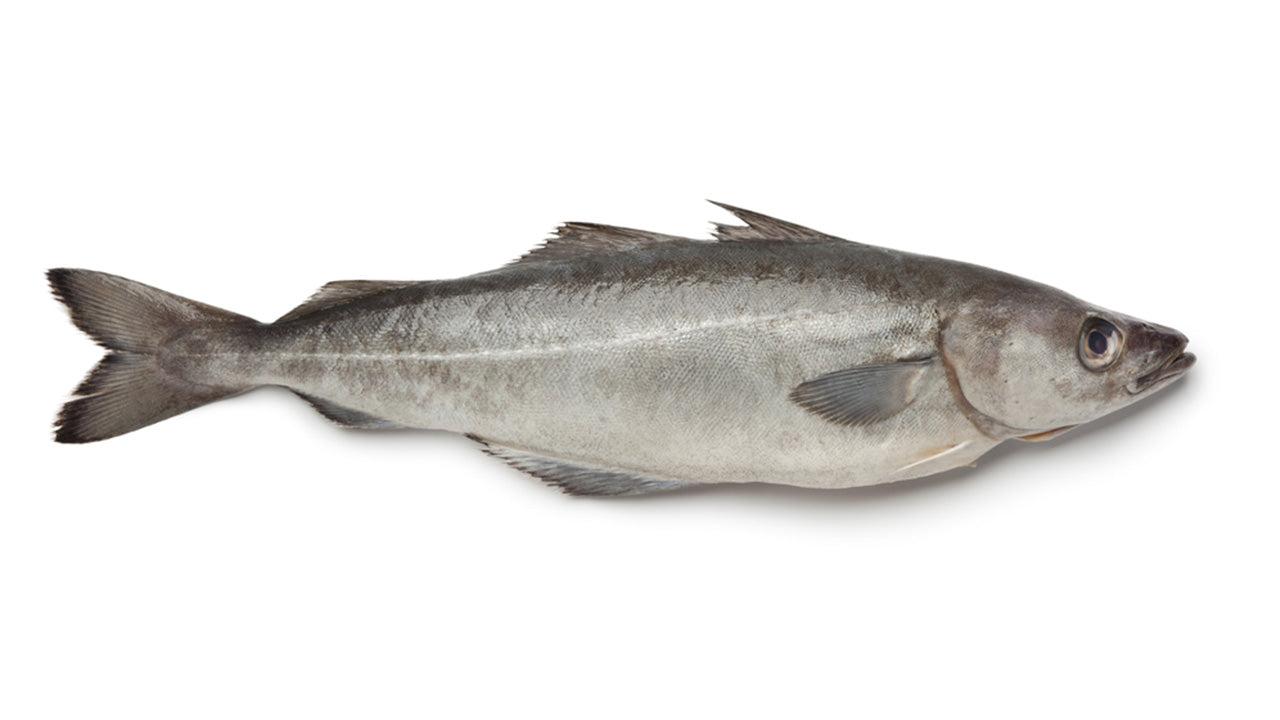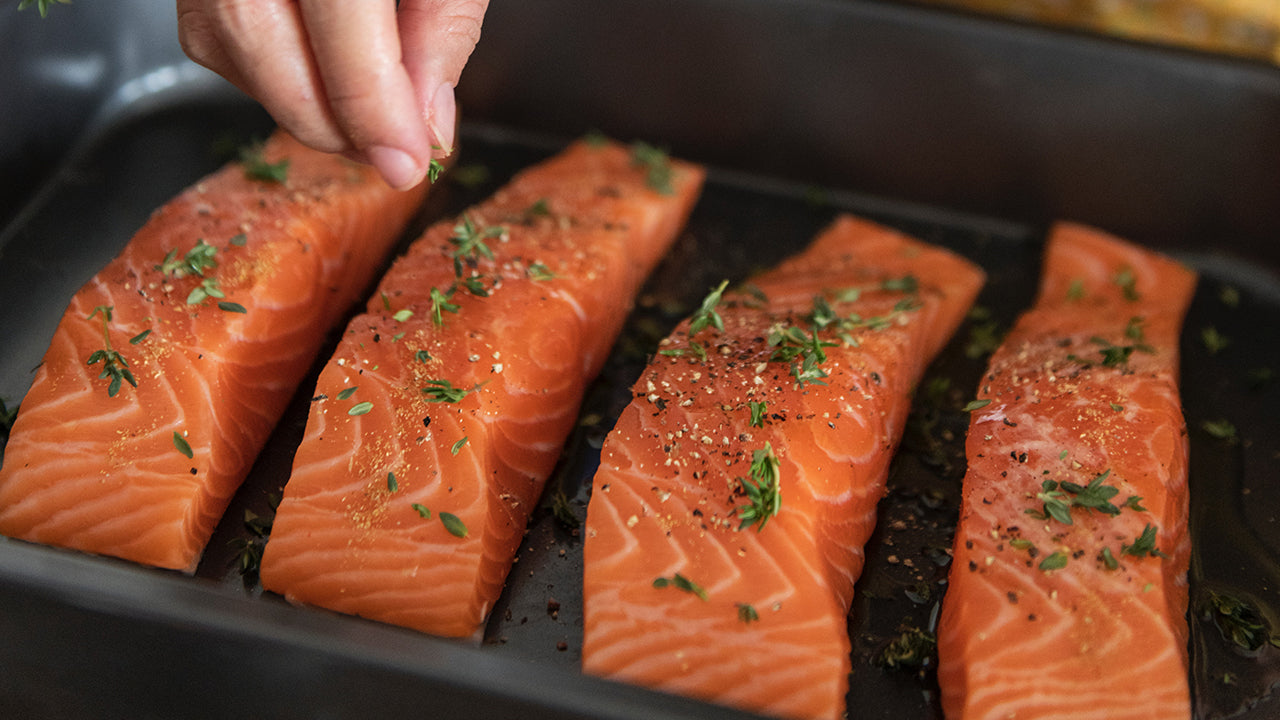Pollock 101: Pollock Fish Nutrition Facts, Possible Precautions and Top Health Benefits
 By: by Amino Science
By: by Amino Science

While you may not have a strong association with the name pollock, it’s one of the most commonly eaten fish in the United States. Pollock fish consistently ranks on the top five list of most frequently eaten seafoods in the United States, with over two billion pounds caught each year.
If you do know the name pollock, you may be prone to discount it as a worthwhile fish option to include in a health-conscious diet, since it often appears in fast food meals and processed items, like fish sticks. When it’s not battered and deep fried, pollock fish makes a wonderful and healthful addition. It’s loaded with nutrients that can improve your health on multiple levels, and you’ll find its mild flavor and delicate, flaky texture make it a versatile protein option.
What Is Pollock Fish?
There are three kinds of fish that are all commonly referred to as “pollock.” Two are species native to the North Atlantic and members of the family Gadidae and genus Pollachius. The first, Pollachius pollachius, is usually called pollock in North America as well as the United Kingdom, while the second, Pollachius virens, is more often called coley in the UK, a derivative of the older name for that fish, coalfish.
The third fish frequently called pollock is also a member of the family Gadidae, but belongs to a separate genus, Gadus. So, if we think of the first two kinds of pollock as siblings, this third one is like their cousin. The Gadus chalcogrammus, as this type of fish is formally known, spawns in the Bering Sea in the late winter and early spring and makes up a large share of the haul taken in by commercial fisherman in the Gulf of Alaska.
In the United States, if someone says pollock, they likely mean Pollachius pollachius, or Atlantic pollock. Although Alaskan pollock, as Gadus chalcogrammus is known, tends to get a modifier before its name, it’s by far the most readily available of the three types.
Both Atlantic and Alaskan pollock look quite similar from the outside, and though their flavor is strong for whitefish, it’s still decidedly on the mild end of the fish flavor spectrum. Pollock makes lovely, soft, flakey fillets. It’s also often used as imitation crab meat.
Key Pollock Nutrition Facts
Though Atlantic and Alaskan pollock look and taste similar, the former does contain more nutrients than the latter, so if you’re trying to get the most value from everything you eat, you should stick to Atlantic pollock.
Half a fillet of Atlantic pollock contains your full recommended dietary allowance (RDA) for selenium, as well your full RDA for vitamin B12 and nearly half your RDA for phosphorus. Pollock also contains between 200 and 500 milligrams of omega-3 fatty acids per serving, along with nutrients shown to have an antioxidant effect in your body.
Half a fillet of Atlantic pollock fish, weighing 193 grams, contains approximately:
- Calories: 178 calories
- Protein: 38 grams
- Fat: 1.9 grams
- Carbohydrates: 0 grams
- Vitamin B12: 6.2 micrograms (103% of your RDA)
- Selenium: 70.4 micrograms (101% of your RDA)
- Phosphorous: 427 milligrams (43% of your RDA)
- Niacin: 6.3 milligrams (32% of your RDA)
- Magnesium: 129 milligrams magnesium (32% of your RDA)
- Vitamin B6: 0.6 milligrams (28% of your RDA)
- Riboflavin: 0.4 milligram (21% of your RDA)
- Potassium: 687 milligrams (20% of your RDA)
- Calcium: 116 milligrams (12% of your RDA)

Pollock is absolutely packed with protein. In fact, nearly 90% of the calories in pollock fish come from protein. Your ideal protein intake varies depending on factors like body weight and activity level. It’s also important to note that your RDA for protein, as for all nutrients, is the minimum amount necessary to prevent you from developing a deficit. When it comes to protein specifically, there’s plenty of evidence to suggest you should make it the focus of your diet.
Research has validated numerous benefits for adopting a high-protein diet, including balanced blood pressure levels, stronger bones, improved blood sugar response, and decreased appetite, which can lead to weight loss.
When you’re increasing your protein intake, it’s important to choose high-quality sources. When determining the value of a protein source, scientists consider the ratio of essential amino acids (EAAs)—the nine amino acids your body cannot generate on its own—to nonessential amino acids (NEAAs)—the 11 others your body also needs to carry out vital functions, but can make on its own.
Scientists also consider how the amount of each individual EAA compares to your body’s requirement for that EAA, as well as how digestible the protein source is, which determines how easily you’ll be able to absorb the EAAs it contains. The highest value proteins, per the Digestible Indispensable Amino Score (DIAAS), are animal and animal-derived proteins, a category that includes pollock fish.
If you're not a fan of pollock or other types of fish, you can also meet your protein needs with a balanced essential amino acid supplement.
Possible Pollock Precautions
One of the biggest concerns many people have about eating fish is the risk of ingesting mercury. Fortunately, testing shows pollock to have one of the lowest levels of mercury contamination of any commercially available fish. According to the Environmental Defense Fund (EDF), you can safely eat four or more servings monthly—the highest recommended for any fish—of both Atlantic and Alaskan pollock.
Some consumers also worry about environmental impact and sustainability. The EDF, who partners with the Monterey Bay Aquarium Seafood Watch program to offer “eco-ratings” for different kinds of fish, gives Atlantic pollock a “best” rating and Alaskan pollock an “ok” rating.
They note that Alaskan pollock populations are the largest in the U.S., and are caught with midwater trawls, which have low rates of bycatch. Atlantic pollock, less abundant than its Pacific sibling, is typically caught by bottom trawl or gillnet. In New England, a “sector” management plan has made the fishing industry there even more sustainable, with dramatic decreases in discard rates.
8 Top Pollock Health Benefits
Thanks to the wealth of nutrients it contains, adding pollock to your diet can significantly improve your health in a number of areas. Here are eight of the most impressive ways eating pollock can benefit you.
1. Prevent Heart Disease
Findings published in the Journal of Medicinal Food in 2012 showed that protein hydrolysates found in pollock can decrease the cholesterol content in the blood, which can prevent circulatory diseases like arteriosclerosis.
Pollock also contains high levels of selenium. A meta-analysis published in the American Journal of Clinical Nutrition found that low levels of selenium can increase your risk of heart disease. While the researchers noted that more evidence is needed before definitively stating that increasing your selenium intake can help to prevent heart disease, this seems like a case where it’s better to be safe than sorry.
Pollock’s power player in decreasing your risk of heart disease is its omega-3 content. These fatty acids have been shown to have a strongly beneficial impact on cardiovascular disease outcomes and continue to be an area of great interest for researchers. Two omega-3s in particular, eicosapentaenoic acid (EPA) and docosahexaenoic acid (DHA), appear to have especially potent effects, especially when it comes to lowering blood pressure levels.
Pollock is also a rich source of a less studied but highly promising fatty acid with something of a tongue-twister name: long-chain monounsaturated fatty acids (LCMUFAs). A study published in Lipids in Health and Disease in 2016 stated that the LCMUFAs found in pollock have cardioprotective potential.
2. Promote Healthy Weight Loss
Research strongly links adding fish to your diet for weight-loss results. With its high-protein content and complete lack of carbohydrates, pollock makes a great choice for those looking to lose weight. There’s also evidence that nutrients found in fish can help you lower your body fat percentage without affecting your lean body mass, meaning it can help you build a higher ratio of muscle to fat.
The omega-3s found in pollock can improve your metabolic health too. According to one study, the effect is enhanced when you pair increased fish consumption with regular exercise. If you’re exercise-adverse, you may find it reassuring to know that the study looked specifically at a very light form of exercise: walking.
There’s also some evidence indicating a connection between omega-3 levels and insulin resistance, a metabolic imbalance that can contribute to obesity, metabolic syndrome, and type-2 diabetes. It appears that omega-3s can help to counteract insulin resistance.
3. Protect Against Cancer
Thanks, again, to its high omega-3 content, as well as the generous amounts of selenium and riboflavin it contains, eating pollock can help lower your risk of cancer.
A study published in the International Journal of Molecular Sciences found that low levels of omega-3s, and of DHA in particular, can not only increase your risk of breast cancer, but also how quickly it progresses, your overall prognosis, and your risk of relapse. Increasing your fish consumption, the researchers stated, can improve your response to anti-cancer therapies and reduce the unpleasant symptoms that often accompany cancer treatments. They also noted that experimental and clinical evidence shows eating more fish, like pollock, that are rich in DHA can limit the growth of breast cancer cells as well as lower your risk of relapse.
According to findings published by Lancet, increasing your intake of selenium, an essential trace mineral, appears to reduce your risk of all kinds of cancer. The authors note that large-scale clinical trials are being planned to further investigate selenium’s anti-cancer effect.
Riboflavin, also called vitamin B2, acts as an antioxidant inside the body. It appears to help prevent free radical damage that can contribute to the development of cancer. A study published in The Journal of Nutrition investigated riboflavin’s capacity to prevent aberrant DNA methylation, which speeds the progression of cancer. The authors found that an increased intake of riboflavin can decrease the risk of colorectal cancer for women.
4. Enhance Brain Health
The nutrients found in pollock fish, such as vitamin B6, omega-3s, and niacin, can enhance the health of your brain in a multitude of ways.
A review of double-blind randomized controlled trials found that vitamin B6, which our bodies need to regulate mental function and mood, may help to prevent cognitive decline, Alzheimer’s, and other forms of dementia. High blood levels of homocysteine may play a role in the progression of dementia, and vitamin B6 has been shown to lower homocysteine levels.
Vitamin B6 helps balance serotonin and norepinephrine levels in the brain, leading researchers to explore how it can help treat a range of conditions linked by imbalances of those brain chemicals. Findings published in the Annals of the New York Academy of Sciences found that adding more vitamin B6 to your diet may help to treat headaches, depression, chronic pain, hyperactivity, aggression related to behavioral disorders, Down’s syndrome, autism, and PMS.
Omega-3s, those health-promoting superstars, appear to be an effective means of treating Alzheimer’s and major depression—EPA and DHA show the most promise here. Scientists believe their effectiveness may have to do with their ability to cross the blood-brain barrier, which most substances cannot do.
A study published in the Journal of Neuroscience shows that DHA not only has a neuroprotective effect, but can also promote neuroplasticity—the rewiring of brain connections. This has applications for a multitude of conditions, from spinal cord injuries to cognitive decline.
Last but not least, the niacin, or vitamin B3, found in pollock fish can protect against Alzheimer’s and age-related cognitive decline. A large study published in the Journal of Neurology, Neurosurgery, and Psychiatry showed that dietary intake of niacin led to a slower rate of cognitive decline.
5. Reduce Inflammation and Pain Responses
Inflammation can cause or worsen many serious diseases. Avoiding foods known to cause inflammation and filling your plate with ones that can help to quell it should be a vital part of everyone’s wellness plan.
The omega-3 fatty acids found in pollock, and yes, EPA and DHA get a special shout out, have significant anti-inflammatory effects. Studies show they can reduce inflammation markers in hypertensive and/or diabetic adults, decrease inflammation that can lead to tumor growth, and reduce inflammation and improve overall metabolic health. Omega-3s have been successfully used as a substitute for nonsteroidal anti-inflammatory drugs to treat arthritis pain and have been used to treat periodontal disease and inflammatory bowel disease (IBD) as well.
The widespread anti-inflammatory effects of omega-3s occur, researchers have found, because your body metabolizes them into compounds called resolvins and protectins, which has a remarkable ability to lower inflammation levels throughout the body.
6. Assist Treatment of Anemia
Pollock fish offers up substantial amounts of B-complex vitamins, which are crucial to treating anemia.
Increasing your intake of riboflavin (vitamin B2) can be an effective way to counteract anemia. A double-blind, randomized trial made up of rural Chinese pregnant women, who often develop anemia, demonstrated that adding riboflavin reduced rates of anemia, decreased gastrointestinal symptoms, and improved overall well-being.
Your body needs vitamin B6 to create hemoglobin in your blood, which then transports oxygen and mobilizes iron. Your body also needs vitamin B12 to produce red blood cells and to help prevent you from developing megaloblastic anemia, a chronic condition that makes you feel tired and weak.
7. Mitigate Diabetes Symptoms
Foods high in omega-3s, like pollock fish, can help prevent diabetic complications, including cognitive deficits. And the niacin found in pollock can help regulate blood lipid levels, which can counteract the higher risk of heart disease associated with diabetes.
8. Increase Fertility and Support Pregnancy
Pollock contains a host of nutrients—including omega-3s, selenium, vitamin B6, vitamin B12, and phosphorous—that can improve fertility in men and women and support fetal development.
DHA, that incredibly useful omega-3 fatty acid, plays a role in forming a structure on the head of sperm called the acrosome, a pointy protuberance containing enzymes that punctures the egg’s outer layer, enabling the sperm to fertilize it. And the selenium found in pollock increases sperm mobility, another crucial factor in successful fertilization.
There’s some evidence that omega-3s like those pollock fish contain can balance hormone levels, which can regularize menstrual cycles, among other benefits. Their hormone-balancing capacity makes them helpful when it comes to treating endometriosis and polycystic ovarian syndrome, two conditions that can make it challenging to conceive.
Two omega-3s—you guessed it, EPA and DHA—work synergistically with vitamin B6 to ensure healthy neurodevelopment during pregnancy. One study published in Obstetric & Gynecological Survey found that increased omega-3 intake can also lower your risk of premature delivery, increase birth weight, and reduce your chances of preeclampsia and postpartum depression. A separate study found it can also increase your breast milk production. And increasing your vitamin B6 intake reduces nausea and morning sickness.


Up to 25% off Amino
Shop NowTAGS: food
Join the Community
Comments (0)
Most Craveable Recipes




 833-264-6620
833-264-6620



















